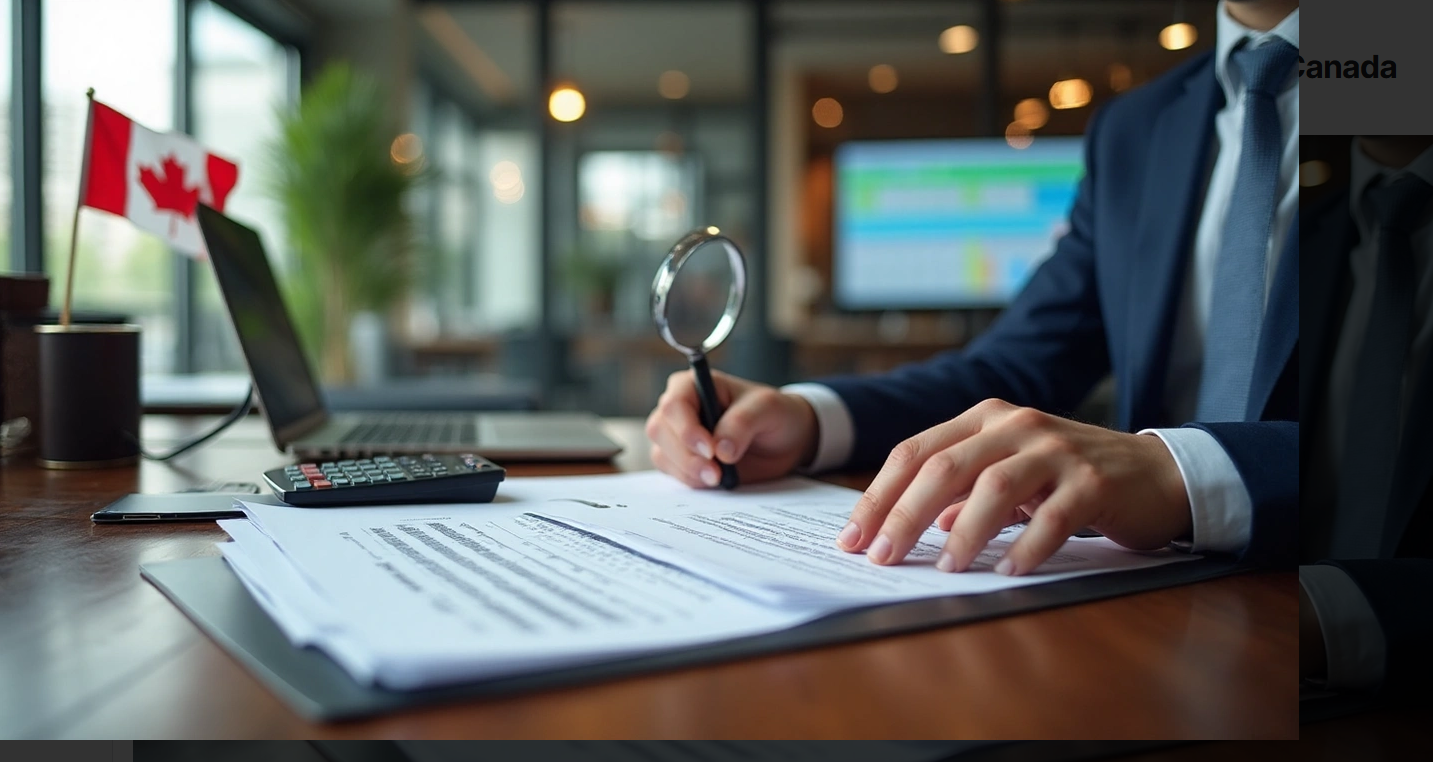Navigating the complexities of Tax Filing for Newcomers to Canada presents a unique set of challenges and opportunities. The process of understanding Canada’s tax system, from determining tax residency status to optimizing tax credits and deductions, is pivotal for ensuring compliance and maximizing financial benefits. Each year, the Canada Revenue Agency (CRA) outlines specific tax obligations for residents, non-residents, and deemed residents, including the filing of an income tax return. For newcomers, this not only marks the beginning of their financial journey in Canada but also serves as a crucial step in establishing their fiscal responsibilities and rights within the progressive tax system.

This article aims to demystify the tax filing process for newcomers to Canada by offering a comprehensive guide on how to file taxes in Canada for the first time. It covers essential steps such as understanding one’s residency status, obtaining a Social Insurance Number (SIN), and preparing the necessary documents. Additionally, it outlines the choice of the correct tax filing method, from paper filing to using the CRA’s NETFILE system, and highlights the importance of meeting the tax filing deadline. By exploring tax credits and benefits, such as the GST/HST credit or the First-Time Home Buyer’s Tax Credit, newcomers can leverage opportunities to reduce their taxable income and increase their tax return. Furthermore, for those with foreign income or property, the article provides guidance on how to report this income and claim the foreign tax credit to avoid double taxation. With practical advice and insights, this article serves as an invaluable resource for newcomers to Canada, including international students and temporary residents, seeking to fulfill their tax obligations efficiently and effectively.
Understand Your Residency Status
Determining one’s residency status is a fundamental step for newcomers to Canada, impacting their tax obligations and rights. This section explains how to ascertain whether one is a resident for tax purposes and the significance of various residential ties.
Determine if You are a Resident for Tax Purposes
In Canada, tax responsibilities hinge not on citizenship or immigration status but on residency status. Newcomers must self-assess their situation to understand their tax duties. This involves discerning whether they are factual residents, deemed residents, non-residents, or deemed non-residents. Each category carries distinct tax implications:
- Factual Residents: These individuals have established significant residential ties with Canada. They are taxed on their worldwide income for the duration they are considered residents.
- Deemed Residents: Those who stay in Canada for 183 days or more within a calendar year but do not establish significant residential ties fall into this category. They are subject to federal income tax on worldwide income throughout the year.
- Non-Residents: Individuals in Canada for less than 183 days in a calendar year without significant residential ties are only taxed on their Canadian-sourced income.
- Deemed Non-Residents: Often applicable to those who might qualify as factual or deemed residents but are treated as residents of another country under a tax treaty. They face Canadian federal tax on income from Canadian sources.
Significant and Secondary Residential Ties
Understanding both significant and secondary residential ties is crucial for accurately determining residency status:
- Significant Residential Ties include owning or leasing a home in Canada, having a spouse or common-law partner and dependents in Canada. These are primary indicators of residency.
- Secondary Residential Ties might include possessing a Canadian driver’s license, bank accounts, credit cards, and memberships in local clubs or gyms. These ties provide additional context but are less decisive than significant ties.
The Canada Revenue Agency (CRA) may request documentation to verify these ties, such as property leases or bank statements, especially in complex cases like dual residency. Newcomers should prepare to substantiate their claims about residency status, as this determines their tax filing obligations.
By accurately establishing residency status, newcomers can ensure they meet their tax responsibilities in Canada, avoid penalties, and take advantage of any applicable tax benefits. This foundational knowledge assists in navigating the complexities of the Canadian tax system, setting the stage for financial stability and compliance.
Get a Social Insurance Number (SIN)
Why You Need a SIN
A Social Insurance Number (SIN) is a 9-digit number essential for anyone working in Canada or accessing government programs and benefits. This unique identifier is crucial for several reasons:
- Employment in Canada: Every individual employed in Canada must provide their SIN to employers to facilitate payroll deductions and remit contributions to programs like the Canada Pension Plan (CPP) and Employment Insurance (EI).
- Government Programs and Benefits: Accessing government services such as health care, and receiving benefits like the Canada Child Benefit (CCB), requires a SIN.
- Tax Filing: A SIN is necessary to file income taxes in Canada. It helps the Canada Revenue Agency (CRA) process your tax returns and administer tax and benefits accurately.
How to Apply for a SIN
Applying for a SIN is a straightforward process that can be completed through one of three methods: online, in-person at a Service Canada Centre, or by mail. Here’s how newcomers can apply for their SIN:
- Gather Required Documents:
- Proof of Identity: You will need to provide original documents such as your birth certificate, passport, or permanent resident card.
- Proof of Legal Status in Canada: Documents like a birth certificate, citizenship certificate, permanent resident card, or work permit are necessary to prove your status.
- Choose Your Application Method:
- Online: The fastest and most convenient way to apply for a SIN is online through the official Service Canada website.
- In-Person: Visit a Service Canada office. This method is beneficial if you need assistance or have questions about the application process.
- By Mail: If you prefer or need to apply by mail, ensure all documents are correctly filled out and originals are sent as required.
- Submit Your Application:
- When applying, ensure all documents are valid, legible, and in either English or French.
- Service Canada will review your documents and, if verified, issue your SIN.
- Receive Your SIN:
- You will receive your SIN number immediately when applying in person. For online and mail applications, the SIN card arrives in the mail within 10 business days.
- Secure Your SIN:
- Store your SIN securely and do not carry it with you to avoid loss or theft.
- Share your SIN only when legally required, such as with your employer after you are hired, or when accessing specific government services.
For children aged 12 and above, they can apply for a SIN on their own. Parents or legal guardians can apply on behalf of children under the age of majority in their province.
Applying for a SIN as soon as possible after arriving in Canada is advisable, especially if you plan to work immediately or apply for government programs. Remember, there are no fees associated with applying for a Social Insurance Number in Canada. By securing a SIN, newcomers take a significant step towards integrating into Canada’s social and economic systems, ensuring they meet their obligations and access entitled benefits.
Know Your Tax Obligations
Income Tax: Federal and Provincial
In Canada, individuals are required to file an annual income tax return with the Canada Revenue Agency (CRA) to report their total income and calculate the amount of federal and provincial/territorial income tax they owe. The federal income tax rates start at 15% on the first $49,020 of taxable income and can rise up to 33% on taxable income exceeding $216,511. Most provinces and territories also levy their own income taxes, with rates generally ranging from around 4% to 21% of taxable income, depending on the region and the income bracket.
For newcomers to Canada, understanding these tax obligations is crucial. If one has a home, a spouse or common-law partner, or dependents in Canada, they are considered a resident for tax purposes. This residency status requires them to file taxes for the entire year or part of the tax year they’ve lived in Canada. The tax filing deadline is typically April 30 of every year, with an extension to the next business day if it falls on a weekend. For self-employed individuals, the deadline extends to June 15.
Other Taxes and Credits
Beyond income tax, Canadians may also be subject to other types of taxes, which include:
- Goods and Services Tax (GST) or Harmonized Sales Tax (HST) on most purchases of goods and services.
- Payroll taxes, including contributions to the Canada Pension Plan (CPP) and Employment Insurance (EI) premiums.
- Property taxes on real estate.
- Excise taxes on specific products like gasoline, alcohol, and tobacco.
Moreover, various tax credits and deductions are available that can significantly reduce the amount of tax owed. These include the basic personal amount, which allows an individual to earn up to $15,000 without paying federal income tax. Other notable credits include the Canada caregiver credit, the disability tax credit, and the medical expense tax credit. Newcomers should also be aware of possible credits and benefits specifically designed for them, such as the Canada child benefit, the Goods and Services Tax/Harmonized Sales Tax (GST/HST) credit, and provincial and territorial benefits.
For newcomers who have not yet filed a tax return, applying for benefits like the GST/HST credit and the Canada child benefit (CCB) might still be possible through specific forms. This proactive approach ensures that they do not miss out on financial benefits due to the lack of a filed tax return.
Navigating the tax landscape as a newcomer in Canada can be complex, but understanding these obligations and potential credits can lead to significant financial benefits and compliance with Canadian tax laws.
Prepare the Necessary Documents
To ensure a smooth and accurate tax filing experience for newcomers to Canada, gathering and organizing all necessary documents beforehand is crucial. This preparation not only facilitates the tax filing process but also helps to maximize potential deductions and credits. Here is a detailed guide on how to prepare the essential documents for tax filing.
Collect T4 Slips and Other Income Statements
Start by collecting all income statements. These include:
- T4 Slips: These slips report employment income and are essential for filing your taxes.
- T4A or T4E Slips: Gather slips for Employment Insurance benefits or other income types like pensions or annuities.
- T3, T5, T5008 Slips: These are necessary for reporting income from investments such as interest, dividends, and mutual funds.
- T2202 Tuition and Enrollment Certificate: Essential for students to claim tuition fees.
- Other Income Statements: Include any other relevant income documentation such as COVID-19 relief payments (T4A), Old Age Security (T4A-OAS), CPP benefits (T4AP), and social assistance payments (T5007).
Keep Records of Deductions and Credits
It is vital to maintain detailed records of all potential deductions and credits to ensure you can claim them effectively:
- Receipts for Eligible Deductions: These can include charitable donations, medical expenses, child care expenses, and moving expenses. Also, keep receipts for home office expenses, especially relevant if you worked from home due to COVID-19.
- Records of Rental or Business Income and Expenses: If you have rental income or operate a business, including self-employment, maintain thorough records of all related income and expenses.
- Educational and Professional Development Costs: Keep receipts for any exams for professional certification or tuition fees that could qualify for credits.
- Vehicle and Travel Expenses: For those claiming vehicle expenses, ensure to keep an accurate logbook along with receipts for fuel, maintenance, and insurance.
- Employment Expenses: If you have unreimbursed employment expenses, collect documentation such as the T2200 form, which your employer must provide.
Organizing these documents early in the year and maintaining a dedicated file for all tax-related paperwork can significantly ease the stress of tax season. By having all necessary documentation at hand, you can be confident in your tax filings and ready to consult with a tax professional if necessary. This thorough preparation not only streamlines the process but also ensures that you take advantage of all applicable deductions and credits, potentially reducing your overall tax liability.
Choose the Right Tax Filing Method
Selecting the appropriate method to file your taxes is crucial for ensuring accuracy, security, and timeliness. Newcomers to Canada can choose between electronic filing options and traditional paper returns. Each method has its advantages and specific considerations.
Electronic Filing Options
Electronic filing, or e-filing, is a preferred method due to its efficiency and accuracy. This process involves submitting your tax return electronically to the Canada Revenue Agency (CRA). Here are the primary electronic filing options available:
- Tax Preparation Software: Various software programs like TurboTax, H&R Block, and TaxAct provide e-filing services. These tools guide users through the tax preparation process, helping to identify potential tax credits and deductions, and allow for the electronic submission of the return.
- CRA’s NETFILE: A secure service provided by the CRA that allows individuals to file their tax return online directly. To use NETFILE, one must prepare their taxes using a CRA-certified tax preparation software.
- Free Online Services: For eligible taxpayers, the CRA offers free online tax preparation software through the NETFILE program. This option is available for individuals with a simple tax situation or an adjusted gross income of $73,000 or less.
Choosing to file electronically can speed up the processing time of your tax return and result in quicker refunds. It also reduces the risk of errors common in manual calculations.
Paper Returns
While electronic filing is advantageous for many, some individuals may prefer or require paper filing. This traditional method involves filling out tax forms manually and mailing them to the appropriate CRA address. Here are the steps to file a paper return:
- Complete the Necessary Tax Forms: Obtain the correct forms for your tax situation, which are available on the CRA website or at local tax offices.
- Accurately Fill Out Forms: Ensure all information is correct to avoid common errors that can arise from manual entry.
- Include All Required Documents: Attach all necessary supporting documents, such as T4 slips and receipts for deductions and credits.
- Mail to the Correct Address: Send your completed forms and documents to the address specified by the CRA for your region. Ensure that your return is postmarked by the tax filing deadline to avoid penalties.
Filing a paper return is generally slower than electronic submissions and may take longer for the CRA to process. However, it remains a viable option for those who do not have access to electronic filing methods or prefer a tangible record of their submission.
By understanding and choosing the right tax filing method, newcomers to Canada can navigate their tax obligations more confidently and efficiently. Whether opting for the swift convenience of electronic filing or the traditional approach of paper returns, it is vital to select the method that best suits your individual needs and ensures compliance with Canadian tax laws.
Filing Your First Tax Return
Filing your first tax return in Canada as a newcomer can be a complex process, but understanding the steps involved can make it more manageable. This guide provides a detailed overview of how to navigate this essential task and highlights common pitfalls to avoid.
Step-by-Step Guide
- Gather All Necessary Documents: Before you begin, ensure you have all the required documents. These include your Social Insurance Number (SIN), T4 slips from employers, and any other income statements, such as foreign income details and assets over $100,000 that need to be reported on Form T1135.
- Determine Your Filing Status: As a newcomer, you must determine if you’re considered a resident for tax purposes. This affects your tax obligations, including the need to report worldwide income.
- Calculate Your Taxable Income: Add up all sources of income, including employment earnings in Canada and any income earned abroad before moving to Canada.
- Choose the Right Tax Form: Most newcomers will use the T1 personal income tax form to file their taxes. Ensure you include all necessary schedules and information forms.
- File Your Return: Newcomers often need to mail their first tax return to the Canada Revenue Agency (CRA), unless they are using a certified tax preparer. After filing your first return, you can register for CRA’s My Account to manage your taxes online in subsequent years.
Common Mistakes to Avoid
- Forgetting to Report All Income Sources: Ensure you include all income from both Canadian and foreign sources. Omitting income can lead to penalties and interest charges.
- Failing to Claim Eligible Deductions and Credits: Understand the credits and deductions you are eligible for, such as childcare expenses or medical expenses. Keep all receipts and documentation to support your claims.
- Miscalculating Your Taxable Income: Double-check all figures for accuracy. Errors in calculation can affect the amount of tax owed or result in a smaller refund.
- Submitting Your Return After the Deadline: Ensure your tax return is filed by the April 30 deadline to avoid late penalties. For self-employed individuals, the deadline extends to June 15.
- Neglecting to Sign Your Tax Return: A common oversight for first-time filers is forgetting to sign their tax return, which can delay processing.
By following these guidelines and being mindful of common errors, newcomers to Canada can successfully navigate their first tax filing experience. Remember, accurate and timely filing not only complies with Canadian laws but can also optimize your financial outcomes in your new home.
Utilize Tax Credits and Benefits
GST/HST Credit
The GST/HST credit is a tax-free quarterly payment designed to help individuals and families with low to modest incomes offset the GST or HST they pay throughout the year. Eligibility for this credit is determined based on one’s net family income, marital status, and the presence of children. For the 2022 base year, individuals could receive up to $496 if single, $650 if married or in a common-law partnership, and an additional $171 for each child under 19 years of age. To qualify, one must be a Canadian resident for tax purposes and file an annual tax return. Newcomers to Canada need to submit specific forms to a local tax center to apply, depending on their family situation. Those with children should use the Canada Child Benefits Application (Form RC66), while those without children need the GST/HST Credit Application for Individuals Who Become Residents of Canada (Form RC151).
Canada Child Benefit and Other Supports
The Canada Child Benefit (CCB) is a tax-free monthly payment made to eligible families to assist with the costs of raising children. This benefit may also include the child disability benefit for children with severe and prolonged impairments in physical or mental functions. The amount of the CCB depends on the family’s net income and the number of children under 18 years of age. Families can receive up to $1,680 per child per year through the Ontario Child Benefit, which is assessed automatically when applying for the CCB. Payments are determined by the Canada Revenue Agency (CRA) and depend on the adjusted family net income reported on the annual income tax return. To calculate potential payments, families can use the CRA’s benefit calculator. Importantly, tax filing is a prerequisite for qualifying for both the Canada Child Benefit and the Ontario Child Benefit.
Consult a Tax Expert if Needed
When navigating the complexities of tax filing as a newcomer to Canada, consulting a tax expert can be invaluable. Tax professionals help ensure that individuals are maximizing deductions, credits, and minimizing tax liabilities. Here are scenarios indicating when professional help might be necessary and tips on finding a reliable tax consultant.
When to Seek Professional Help
Individuals should consider seeking professional tax advice in several situations:
- Complex tax situations such as owning a business, having rental income, or managing capital gains or losses.
- Major life events like marriage, the birth of a child, or purchasing a home, which could significantly impact tax obligations.
- Self-employment or having multiple sources of income, which can complicate tax filings.
- Experiencing a significant change in financial status from the previous year.
- Being audited by the Canada Revenue Agency (CRA).
These circumstances can introduce complexities that benefit from a professional’s expertise to navigate Canada’s tax laws effectively.
How to Find a Reliable Tax Consultant
Selecting a qualified and trustworthy tax consultant requires careful consideration. Here are steps to ensure one finds a reputable professional:
- Referrals: Start by asking for recommendations from trusted sources such as friends, family, or financial advisors. Personal referrals often lead to reliable services.
- Credentials: Look for professionals with relevant certifications, such as Certified Public Accountants (CPA) or enrolled agents. These credentials indicate a recognized level of expertise in tax preparation.
- Specialization: Ensure the consultant has experience with issues similar to your own, especially if dealing with cross-border taxation or specific investments.
- Check Reviews: Online reviews and ratings can provide insight into a consultant’s reliability and customer satisfaction.
- Interview Potential Consultants: Schedule consultations to discuss your tax situation, their experience, and their approach to tax planning and filing. This interaction can also help gauge their communication skills and compatibility.
- Transparent Fees: Understand how they bill for their services. Reliable tax professionals should provide clear, upfront information about their fees.
By thoroughly vetting potential tax consultants and understanding when their expertise is needed, newcomers can navigate their tax responsibilities in Canada more confidently. Engaging a professional can ensure compliance with tax laws, optimize financial outcomes, and provide peace of mind during the tax filing process.
Conclusion
Navigating the tax system in Canada as a newcomer encapsulates a blend of responsibilities and opportunities, from establishing tax residency to maximizing potential returns through various credits and benefits. This comprehensive exploration has highlighted the importance of understanding your residency status, securing a Social Insurance Number (SIN), fulfilling tax obligations, and the significance of selecting the most fitting tax filing method. Additionally, the article shed light on the key documents required for a smooth filing process and when it might be wise to seek expert advice, ensuring newcomers are well-equipped to navigate their fiscal duties efficiently.
For those seeking specialized support tailored to the unique needs of newcomers, BOMCAS, a dedicated accountant for newcomers to Canada, stands ready to offer expert guidance and assistance. Their expertise ensures that newcomers not only comply with Canadian tax laws but also optimize their financial outcomes, making the transition smoother. By embracing the outlined practices and considering professional support, newcomers can confidently integrate into the financial fabric of Canada, establishing a solid foundation for their new lives.




![Why Your Small Business Needs a Tax Accountant in Canada [2025 Guide]](https://bomcas.ca/wp-content/uploads/2025/06/Small-Business-Needs-a-Tax-Accountant-in-Canada.png)
![The Hidden Costs of DIY Personal Tax Preparation in Canada [2025 Guide]](https://bomcas.ca/wp-content/uploads/2025/06/The-Hidden-Costs-of-DIY-Personal-Tax-Preparation-in-Canada.png)




 View Our Location
View Our Location





 181 Meadowview Bay, Sherwood Park, AB T8H 1P7, Canada (Online Clients Only)
181 Meadowview Bay, Sherwood Park, AB T8H 1P7, Canada (Online Clients Only)